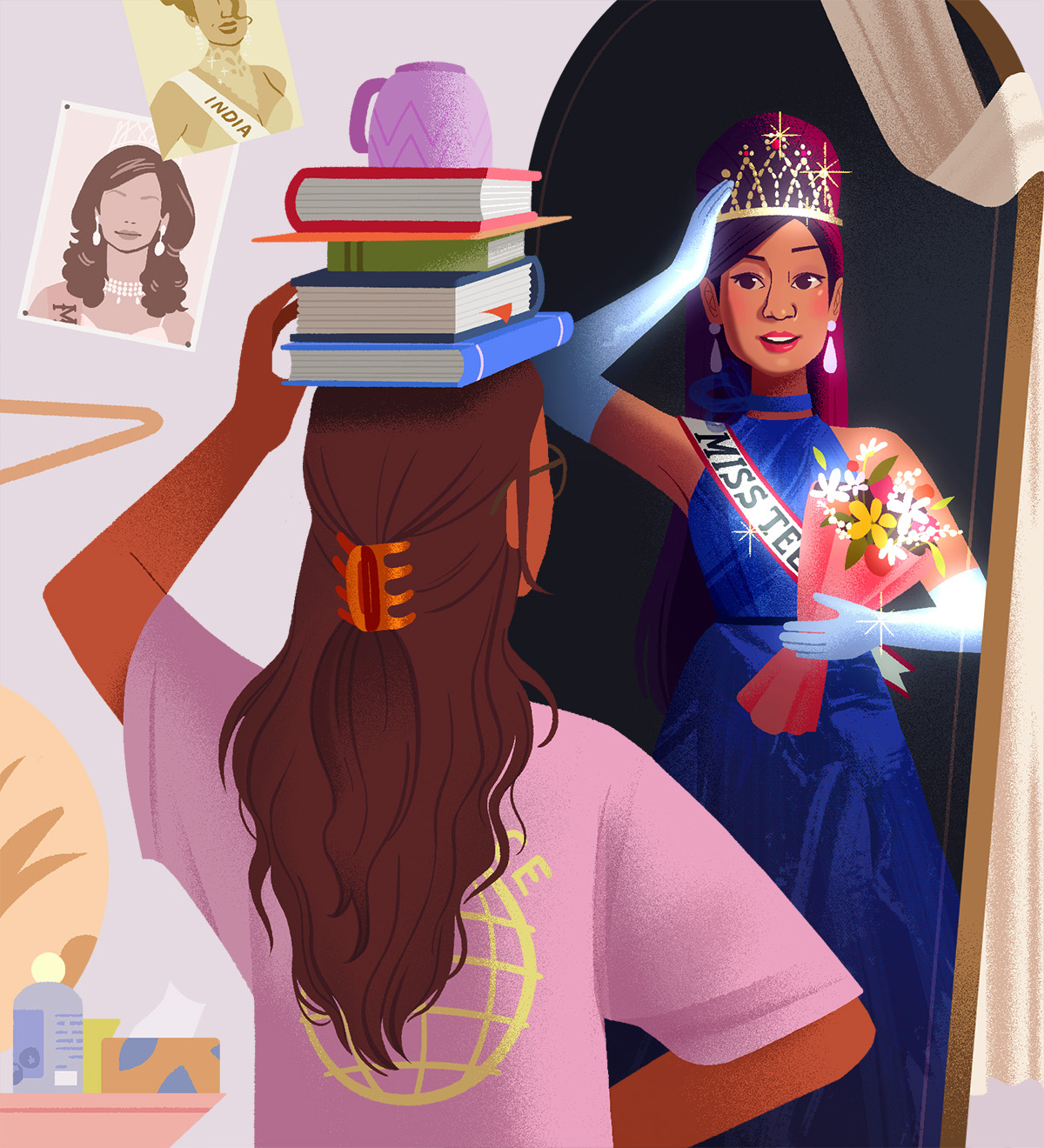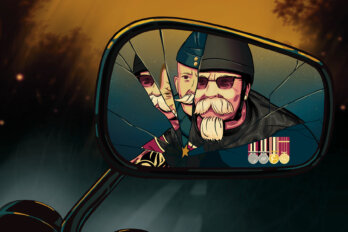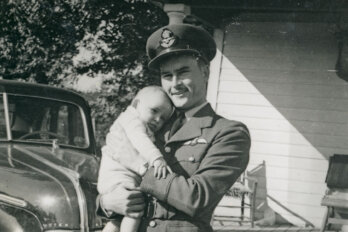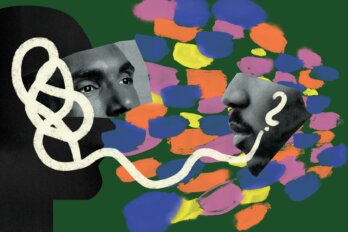The straps on the silver high heels dug into my feet, the prelude to the welts that would come later. Under the bright lights, my skin threatened to sweat off layers of concealer and foundation. My legs were shaking and my fingertips ached from a set of acrylic nails. By the time I arrived on the stage in my evening gown, after a half-hearted opening dance number and a fumbled interview, I already knew I had lost the beauty pageant.
In 2010, I had just started my junior year of high school when I decided to enter the Ontario qualifier of the Miss Teen Canada pageant. With my short, scrawny build; thick-rimmed glasses; and jet-black hair that I flat-ironed daily, I didn’t think of myself as particularly beautiful or popular. Instead, I prided myself on my good grades. While I dabbled in group sports like swim team and softball, I was more likely to be found buried in a book or volunteering on student council. But I was ready for my makeover, and I decided that a pageant was the perfect thing to get me there.
It’s not difficult to trace my desire for conventional beauty—and the expectation one could magically attain it—back to its sources. In Grease, I watched Sandy Olsson go from goody two-shoes to bombshell with just a perm and a skin-tight black outfit. For Mia Thermopolis of The Princess Diaries, simply putting in contact lenses, straightening her hair, and plucking her eyebrows was enough to turn her into royalty. As Carly Lane notes in a piece for The Mary Sue, it’s usually “nerdy” girls and women who undergo the onscreen makeover. The point of such scenes “is to bestow upon them the Hollywood ideal of beauty [and] make them more socially palatable.”
That’s what I was hoping the pageant would do for me. I knew it would be unfamiliar and even uncomfortable, but like these Hollywood heroines, I figured the discomfort was where the payoff happened. I’d emerge from the pageant having discarded my awkwardness, transformed into the epitome of grace.
It wasn’t just white Hollywood teens who embodied this narrative. When I was growing up, my idols were women like Aishwarya Rai and Priyanka Chopra, Bollywood actors who were also models and pageant queens. In addition to their acting careers, each of them had been crowned Miss World—Rai in 1994 and Chopra in 2000. Their wins only made pageantry seem more appealing to me. When my mom put me into Bollywood dance classes at age ten, I imagined I was Rai’s Paro in Devdas or Chopra’s Rani in Mujhse Shaadi Karogi—the heroine, the beauty, the pursued.
Armed with these dreams, I entered the pageant brimming with optimism. I practised my walk at home in front of the mirror and got my eyebrows threaded into the pencil-thin line that my esthetician thought every girl wanted. Less optimistically, I signed rules and a code of conduct that confirmed I was a “natural born female,” had never been “married, divorced, pregnant or given birth,” didn’t have a criminal record, and was either currently enrolled in or a graduate of elementary or high school. In my naive pursuit of the nerdy-girl makeover, I didn’t think to question the way these rules demanded a narrow definition of my body and autonomy in ways that, I later recognized, were both transphobic and classist. I did realize, though, that I was one of the few racialized girls competing in the pageant.
As the pageant progressed, I came to see various differences between what I’d been told beauty was and what I truly believed it to be. To become the elegant, demure pageant queen would mean shedding fundamental aspects of myself—those elements of my appearance that were coded as “nerdy” or “dorky” and therefore less desirable—and agree to be trained into docility. This is the trade that lies at the centre of the makeover arc, one I ultimately realized I wasn’t willing to make.
In the same way I believed the Hollywood makeover was something I could enact on myself, I thought that pursuing pageants like my Bollywood heroines would make me naturally elegant and well spoken.
What I didn’t realize was that the women I idolized were anomalies in South Asia in many ways. With her light skin and green eyes, Aishwarya Rai looked more like the white heroines of Hollywood movies than the brown girls and women I grew up with. In 2011, when I signed up for the pageant, fair-faced stars were still prevalent in Bollywood.
India and Bollywood have a long history with the pursuit of light skin. As professors Neha Mishra and Ronald Hall write in The Conversation, this is ingrained in part due to colonialism: “Being subject to a succession of white(ish) overlords has long associated light skin with power, status and desirability among Indians.” They point to the way colourism incites many Indians to lighten their skin in a phenomenon called bleaching syndrome, which “reflects a deep-set belief that fair skin is better, more powerful, prettier.” Last June, amid global protests about anti-Black racism, Unilever rebranded a skin cream long accused of perpetuating these beliefs. Formerly called “Fair & Lovely,” the product line had been criticized for positioning beauty as synonymous with whiteness. Though it’s now known as “Glow & Lovely,” people are skeptical of the renaming. Chandana Hiran, who authored one of the petitions, told the BBC that “it’s still fairness cream no matter what they call it.” This glorification of light skin trickled down through the numerous Bollywood movies I consumed.
In India, idolizing whiteness goes beyond bleaching to fundamentally inform how people value beauty. I recognize this in another of my other childhood idols, Priyanka Chopra. In 2016, she told Refinery29 that she thought she won Miss World because she was “well spoken,” but when a pageant that styles itself as global is held in English, the idea of being articulate becomes code for being able to assimilate. Both Rai and Chopra used similar voices when answering questions in their pageants in 1994 and 2000—ones that were demure, polished, and gentle.
The problem with using Rai and Chopra as my models is that they were never “real” in the way I thought they were. Every instance I saw of these women was carefully curated, whether pageant events, magazine covers, or Bollywood movies. But I’d set a high standard based on their example—which meant I was inevitably disappointed by the realities of the pageant, when I wasn’t able to embody perfection myself.
I stumbled as we practised our walks along the carpeted floor because I hadn’t properly broken in my silver heels. During our interview prep, all of the delegates lined up and the staff went down the line asking rapid-fire questions. When my turn came, I found myself blanking, unable to give a coherent answer. Even choreography, which I thought would be my one strength, felt insurmountable—the way we counted beats was nothing like my Bollywood dance classes.
The Hollywood transformation I had expected felt further away with every faltering stride, disjointed interview answer, and missed dance step. I had thought that the pageant preparation would allow me to access the beauty I sought. Instead, every moment reminded me that I didn’t belong there.
I frequently felt overlooked by the judges during that pageant weekend, especially during the sections that were meant to “curate” us into an ideal of beauty. When we learned the choreography set to Rihanna’s “Only Girl (In the World),” I ended up mostly hidden in the back. While I tried to cultivate a demure, polished manner, the voice that emerged instead sounded flustered and forced. I couldn’t disguise my discomfort with how out of place I felt. Instead of a chance to transform myself, my surroundings were reinforcing the very insecurities I had hoped to shed.
At the same time, there were so many small moments of kindness throughout that pageant. I remember a Colombian girl, who already looked and acted like a pageant queen, giving me tips on my runway walk. I remember chats in-person and over Facebook Messenger with a Filipina teen who lost this pageant but went on to win others, and how she sent a photo of me that a member of her family had taken. Although we were being judged against one another, my relationships with the contestants were surprisingly supportive. It wasn’t the competition that weighed on me—instead, it was the privileging of certain types of beauty and my own false belief that, if I tried hard enough, I could contort myself into those boxes.
During the interview portion, there was one moment when I shed the mask and gave an honest answer. I had practised so many responses, even googling the types of questions they asked contestants in major pageants, but I drew a blank when the judges asked me who my biggest role model was. “My biggest role model,” I remember saying automatically, “is my dance teacher Reshmi.”
By the standard measures of pageant success, this was an unusual answer. Many of the responses given by Miss Universe and Miss World contestants seemed extravagant, designed to make the contestants appear “worldly” or interested in humanitarianism. My answer, by comparison, was unusually hyperlocal. Drawing a blank on my prepared responses, my respect for a different kind of beauty emerged.
After Bollywood dance, I had taken up a classical Indian dance style called Kathak and continued both until I started university. Most if not all of the girls in the classes idolized Reshmi, who was one of the instructors and the daughter of the owner and artistic director, Aunty Deviekha. To us, Reshmi was the epitome of grace. But, in the way she carried herself, she was also more genuine than the wax figures of Aishwarya Rai or Priyanka Chopra. She reminded us that, more than any natural talent, practice and perseverance were what made a good dancer. When we watched any of the instructors dance, we saw this same duality—what it meant to be both gentle and fierce, compassionate and strict—a very different lesson from the one taught by the theatre of pageantry. Reshmi had helped me practise my walk and posing before the event. I thought she could have easily won any pageant, but I remember her telling me that pageantry “wasn’t for her.”
While I had been trying to fit myself into strict narratives of onscreen beauty, what I saw in movies and what I actually experienced as beautiful in real life were very different things. The realm of dance made this disparity abundantly clear. After losing the pageant, I continued to dance; later, when I left dance, I pursued martial arts. I felt more beautiful practising Kathak footwork or throwing a kick than I ever had under those hot stage lights. I found active beauty in movement, in tradition, and in community—places where I could be seen as a peer, not looked at and judged.
These days, I’m not trying to be Aishwarya Rai or Sandy Olsson, Mia Thermopolis or Priyanka Chopra. Instead, I’m trying to be more like Reshmi or Aunty Deviekha. I’m trying to be as generous and kind as they were. Most of all, I’m trying to extend that love back to myself.





